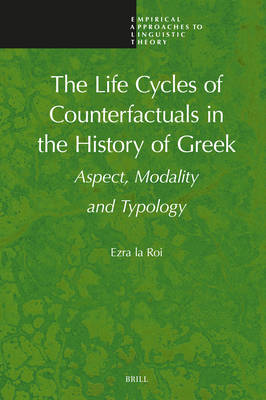
- Afhalen na 1 uur in een winkel met voorraad
- Gratis thuislevering in België vanaf € 30
- Ruim aanbod met 7 miljoen producten
- Afhalen na 1 uur in een winkel met voorraad
- Gratis thuislevering in België vanaf € 30
- Ruim aanbod met 7 miljoen producten
Zoeken
The Life Cycles of Counterfactuals in the History of Greek
Aspect, Modality and Typology
Ezra La Roi
€ 230,45
+ 460 punten
Omschrijving
We constantly refer to counterfactual events--things that didn't happen but could have--through conditional, wish, and modal constructions. Yet, despite their ubiquity, we still know surprisingly little about how these constructions have evolved across languages and through history. This book breaks new ground by tracing, for the first time, the development of counterfactual systems across different constructions, texts, linguistic registers, and historical stages. Drawing on extensive corpus data from Indo-European languages and nearly three millennia of Greek, it offers the first unified account of counterfactual and avertive constructions as core expressions of non-realization. In doing so, it also proposes a revised model of the counterfactual life cycle--one that integrates semantic, morphosyntactic, and pragmatic dimensions--providing typologists with a powerful framework for exploring how counterfactual expressions evolve across languages.
Specificaties
Betrokkenen
- Auteur(s):
- Uitgeverij:
Inhoud
- Aantal bladzijden:
- 344
- Taal:
- Engels
- Reeks:
- Reeksnummer:
- nr. 25
Eigenschappen
- Productcode (EAN):
- 9789004749924
- Verschijningsdatum:
- 27/11/2025
- Uitvoering:
- Hardcover
- Formaat:
- Genaaid
- Afmetingen:
- 155 mm x 235 mm

Alleen bij Standaard Boekhandel
+ 460 punten op je klantenkaart van Standaard Boekhandel
Beoordelingen
We publiceren alleen reviews die voldoen aan de voorwaarden voor reviews. Bekijk onze voorwaarden voor reviews.








